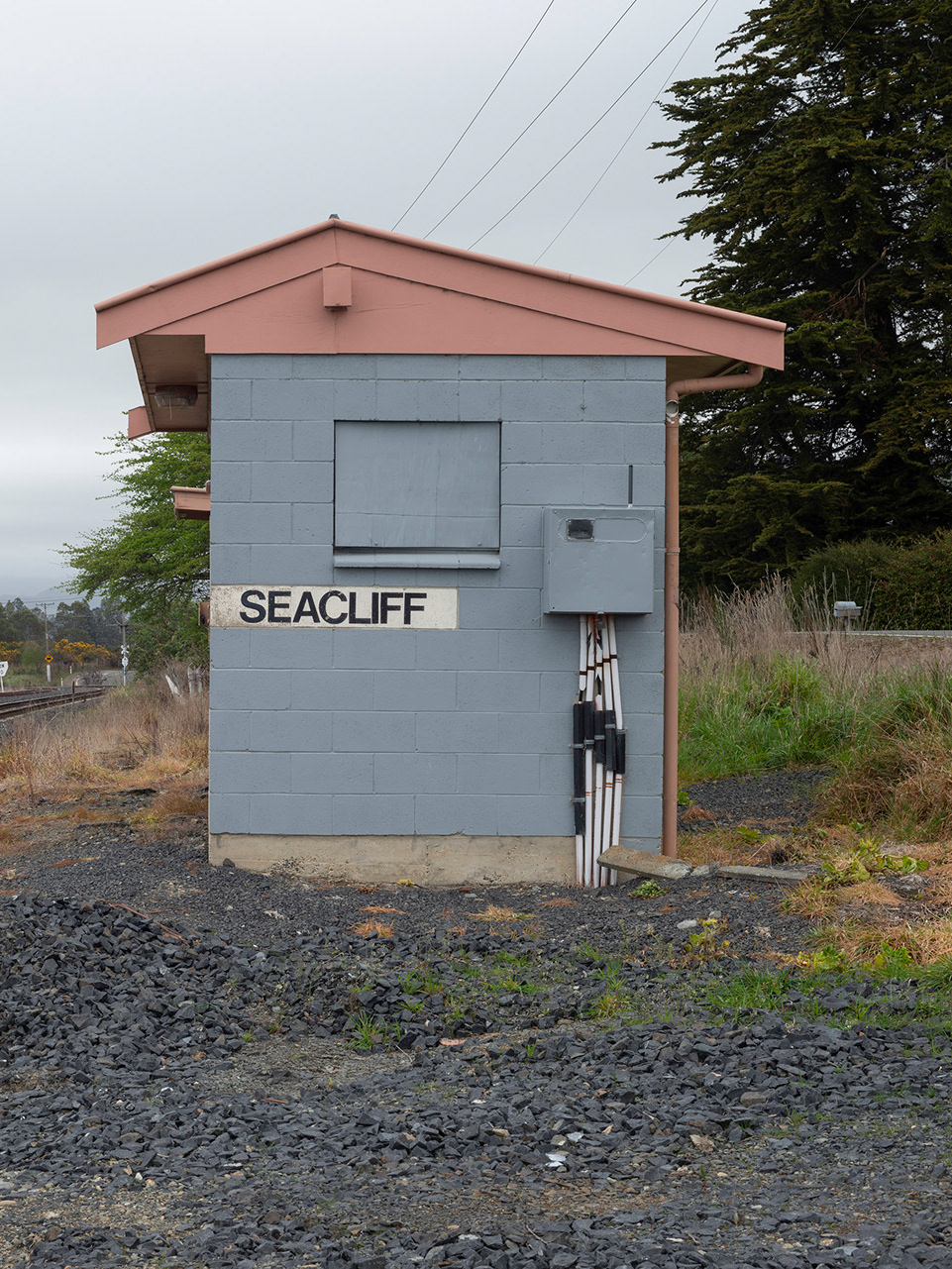Pioneer Gun Turret & War Memorial, Ngāruawāhia 2021
Pioneer Gun Turret & War Memorial, Te Paina (Mercer) 2021
Manaia Redoubt Watchtower and Blockhouse, Manaia 2021
Manaia Redoubt Watchtower (interior), Manaia 2021
Manaia Redoubt Blockhouse, Manaia 2021
Manaia Redoubt Blockhouse (interior), Manaia 2021
Maui Gas Production Facility, Ōpunake 2021
Kapuni Gas Treatment Plant Kapuni 2021
Edition of 15, pigment inks on photo rag baryta, unmounted
1,000 x 1,500 mm $8,500 incl GST
700 x 1,060 mm $6,000 incl GST
400 x 600 mm $4,600 incl GST
1,000 x 1,500 mm $8,500 incl GST
700 x 1,060 mm $6,000 incl GST
400 x 600 mm $4,600 incl GST
The Crown did not invade Waikato to save the settlers of Auckland, but to destroy the Kīngitanga.
– Vincent O’Malley
– Vincent O’Malley
This series of images was made for the publication Brett Graham: Tai Moana Tai Tangata. The images illustrate aspects of the impact of the colonisation of the Taranaki and Waikato rohe. Of particular note are the Pioneer Gun Turret war memorials – the subject of Brett Graham's sculpture O'Pioneer, which he has described as a 'memorial to Victorian England'.
Commissioned by the New Zealand government, the Pioneer was an armour-plated paddle steamer designed for navigation in shallow river waters. It featured two gun turrets pierced with loopholes for 12-pounder Armstrong guns and rifles. Assault by boarding parties could also be defended with boiling water drawn through pipes from the boilers.
Along with its sister vessel the Avon, the Pioneer was instrumental in the 1863 Crown invasion of the Waikato ordered by Governor George Grey. The Pioneer later ran aground and was wrecked on the Manakau Bar. The gun turrets were salvaged and subsequently used as war memorials – on the confiscated pā site of King Tāwhiao in Ngāruawāhia and in Te Paina (Mercer) where Crown forces crossed the Mangatāwhiri river.
The conflict pitted more than 12,000 British imperial troops and naval units, and colonial forces against approximately 4,000 Kīngitanga defenders composed of Waikato and Ngāti Maniapoto, and supporters from other North Island iwi. Battles were fought in locations throughout the Waikato including the shameful raid on the undefended settlement of Rangiaowhia where women, children and the elderly were ruthlessly massacred by troops under the command of Lieutenant-General Duncan Cameron.
Commissioned by the New Zealand government, the Pioneer was an armour-plated paddle steamer designed for navigation in shallow river waters. It featured two gun turrets pierced with loopholes for 12-pounder Armstrong guns and rifles. Assault by boarding parties could also be defended with boiling water drawn through pipes from the boilers.
Along with its sister vessel the Avon, the Pioneer was instrumental in the 1863 Crown invasion of the Waikato ordered by Governor George Grey. The Pioneer later ran aground and was wrecked on the Manakau Bar. The gun turrets were salvaged and subsequently used as war memorials – on the confiscated pā site of King Tāwhiao in Ngāruawāhia and in Te Paina (Mercer) where Crown forces crossed the Mangatāwhiri river.
The conflict pitted more than 12,000 British imperial troops and naval units, and colonial forces against approximately 4,000 Kīngitanga defenders composed of Waikato and Ngāti Maniapoto, and supporters from other North Island iwi. Battles were fought in locations throughout the Waikato including the shameful raid on the undefended settlement of Rangiaowhia where women, children and the elderly were ruthlessly massacred by troops under the command of Lieutenant-General Duncan Cameron.









